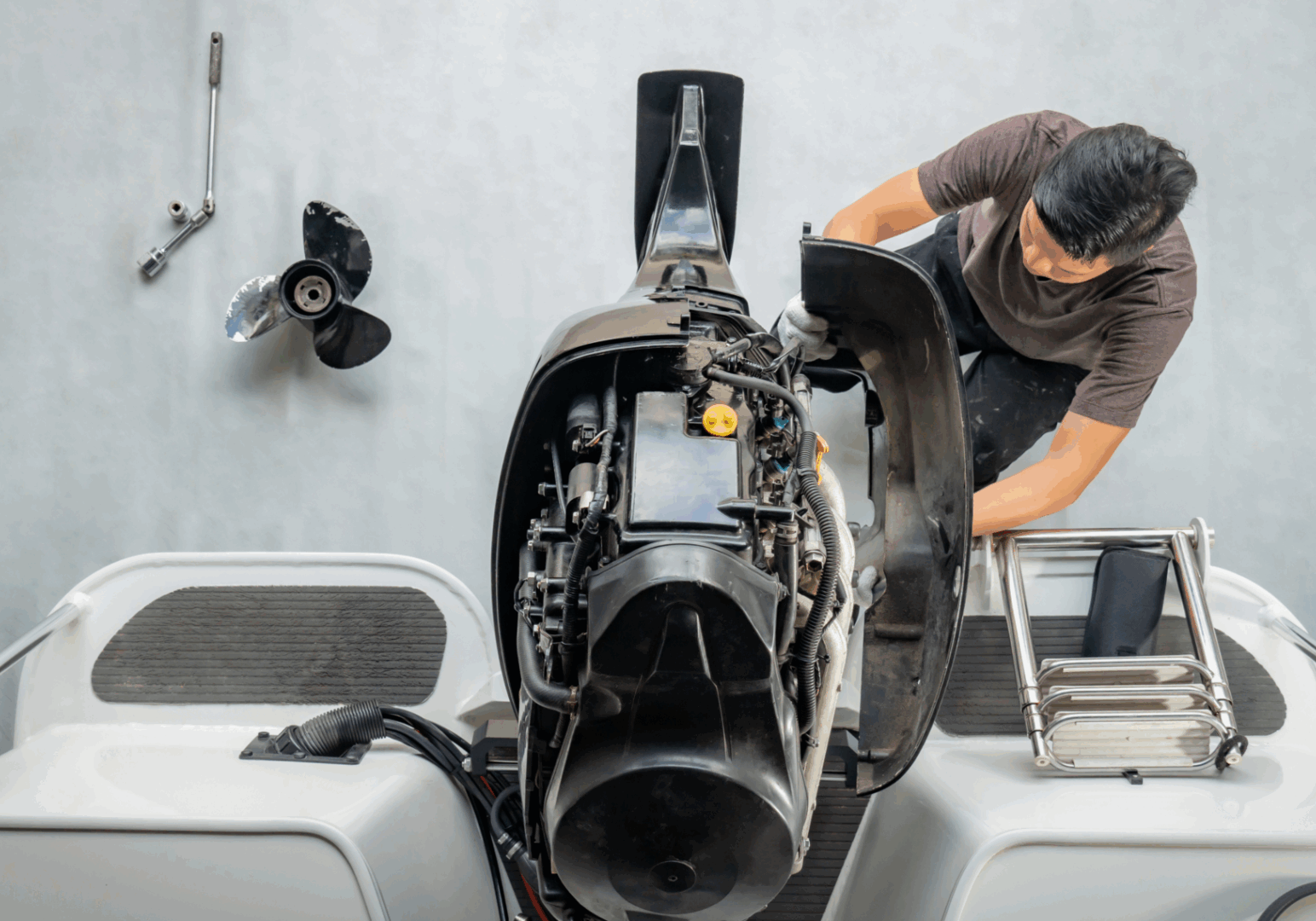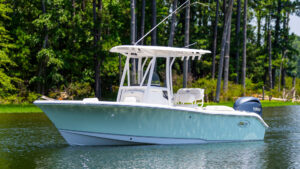The Impact of Engine Hours on Boat Value

You’ve found it—the perfect boat. The hull is spotless, the price fits your budget, but then you see the engine hours: 400. Is that a steal or a red flag? Engine hours are like a boat’s odometer, ticking away its life story, and they can make or break your buy. Too many, and you’re eyeing a worn-out motor that’s going to drown you in maintenance fees—or worse, need a full replacement. In this article, we’ll break down what to look for in engine hours: what they really mean, how they shift a boat’s price, and why they’re just part of the puzzle. Whether you’re buying your first rig or selling one you’ve loved, we’ll show you how those hours can affect a boat’s value.
What Are Engine Hours?
Engine hours might sound like a techy detail, but they’re your first clue to a boat’s past. So, what are they exactly? Think of them as the boat’s mileage log—every hour the engine runs gets tallied up, whether it’s cruising at full throttle or idling at the dock. Unlike a car’s odometer, which racks up miles, boats count time. A boat with 400 hours has seen 400 hours of action, plain and simple. But here’s the catch: not all hours wear the same.
Hours vs. Wear
A car’s miles show road punishment—highways are kinder than stop-and-go. Boats? Hours don’t tell the full story. An hour trolling gently beats an hour slamming waves at top speed. Most engines—outboards, inboards, whatever—handle 1,500-3,000 hours before major overhauls, but how they’re run matters more than the number. Hard use ages them fast; light use stretches their life. That 400-hour boat could be a gem or a junker depending on its story.
Tracking the Time
How do you know the hours? Newer boats have hour meters—little digital counters on the dash ticking away like a stopwatch. Older ones might not, so you’re stuck with seller claims or logs. Check the meter first—tampering’s rare but happens. Cross-reference with maintenance records; oil changes every 100 hours or yearly tune-ups hint at the real count. No meter, no logs? That’s a gamble.
Engine hours are your starting point—they flag how much life’s left in the motor. But they’re not the whole deal. Next, we’ll unpack how those hours hit the price tag and what else you need to peek at before you buy or sell.
How Engine Hours Affect Value
You’ve got the basics of engine hours—now let’s see how they swing a boat’s price tag. Those ticking hours aren’t just a number; they’re a big piece of what you’re paying for—or selling off.
Low Hours: Premium Price
A boat with under 200 hours often fetches top dollar. Less runtime means less wear—think newer parts, fewer repairs. Buyers love that fresh-engine vibe; it’s like a low-mileage car. A 3-year-old boat with 150 hours might hold 75-90% of its original value, especially if it’s pristine. But low hours can hide neglect—sitting unused rusts seals and gums fuel lines. It could also mean the boat was a lemon or had issues when it was taken out which resulted in lower usage. Check deeper into the reason for low engine hours before taking it as a clean bill of health.
High Hours: Bargain or Bust
Over 500 hours, and the price starts to dip—sometimes hard. More runtime signals wear: worn pistons, stretched belts, maybe a rebuild looming. A 5-year-old boat with 800 hours could drop 30-50% off its peak, depending on condition. Heavy use screams maintenance costs, but a well-kept high-hour boat can still run strong. It’s a deal if the seller’s honest—otherwise, it’s a money pit.
Typical Ranges
Most boats rack up 100-200 hours a year if used regularly—weekend warriors or seasonal fishers hit that mark. A 4-year-old boat with 300-500 hours sits in the sweet spot: broken in, not broken down. Compare to averages for its age and type—outboards stretch further than inboards, fishing rigs wear harder than cruisers. Hours outside the norm shift value up or down fast.
Engine hours set the stage for value, but they’re not the final word. A low-hour lemon or a high-hour champ can flip the script.
Beyond the Numbers: What Else to Check
Engine hours give you a snapshot, but they’re not the full picture. A boat’s value hinges on more than that meter—dig deeper to know what you’re really getting. Here’s what else to scope out:
Maintenance History
Hours mean squat without upkeep. A 400-hour boat with oil changes every 100 hours and yearly tune-ups beats a 200-hour rig ignored for seasons. Flip through the logs—look for regular service, filter swaps, impeller checks. No records? That’s a gamble; unserviced engines wear out fast, even at low hours. Good care can stretch an engine past 2,000 hours; neglect can kill it at 500.
Engine Type
Not all motors age the same. Outboards—like a Yamaha or Mercury—often hit 1,500-2,000 hours before big fixes, and swapping them’s a breeze. Diesel inboards can run 5,000-8,000 hours with proper care, but they’re tougher to maintain or replace—think tight spaces and higher labor costs. A 600-hour outboard might be midlife; a 600-hour inboard’s barely warmed up if it’s been maintained.
Usage Type
How those hours piled up matters. A boat fishing offshore in rough seas takes a beating—400 hours of that is brutal. Light cruising on calm lakes? Same 400 hours might leave it barely winded. Ask the seller: Was it a weekend toy or a daily workhorse? Hard use chews through parts—props, pumps, gaskets—faster than the meter shows. Easy miles keep value steady.
Numbers start the story, but maintenance, engine type, and usage write the ending. A high-hour boat with a golden history can outshine a low-hour clunker.
Tips for Buyers and Sellers
You’ve got the scoop on engine hours—now use it to your advantage. Whether you’re buying or selling, these tips turn those numbers into a smart deal.
For Buyers: Negotiate Smart
Hours are ammo—use them. Low hours (under 200) justify a premium, but push for logs to prove it’s not a dock queen with rusty guts. High hours (over 500)? Haggle down—point to wear risks like a worn outboard or an inboard needing pricey TLC, even if it’s got 5,000-hour potential. Get a survey—a few hundred dollars might save you thousands down the road. Compare to similar boats; if 400 hours is average for a 4-year-old rig, don’t overpay for “low use.” Walk if the seller dodges questions.
For Sellers: Boost Your Value
High hours don’t have to sink you. Stack your logs—oil changes, tune-ups, the works—showing that 600-hour inboard’s still kicking strong. Low hours? Highlight light use, but admit if it sat; buyers smell neglect. Price it fair—check local listings for boats with similar hours and type (outboards fade faster than inboards). Throw in recent service receipts; a fresh impeller or belts at 400 hours shows that it’s been maintained. Be upfront—hiding hours backfires when the meter spills it.
Engine hours offer a peek at a boat’s past—low or high, they can affect the price but aren’t the full tale. You’ve learned what to look for when evaluating engine hours, how they shift the value of the boat, and what to look for beyond just the number including maintenance, engine type, and how it’s been run. A cared-for inboard might cruise past 5,000 hours; an ignored outboard could fade at 500. Buyers, this helps you snag a winner or skip a lemon. Sellers, show off how well you’ve maintained yours to hold that price steady. It’s less about the number and more about what’s behind it. With this insight, you’re ready to make the right call and hit the waves.
Search
Recent Posts
When dreaming of owning a boat,…










